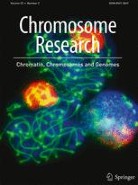
Publication I February 2, 2017
The long zinc finger domain of PRDM9 forms a highly stable and long-lived complex with its DNA recognition sequence
PR domain containing protein 9 (PRDM9) is a meiosis-specific, multi-domain protein that regulates the location of recombination hotspots by targeting its DNA recognition sequence for double-strand breaks (DSBs). PRDM9 specifically recognizes DNA via its tandem array of zinc fingers (ZnFs), epigenetically marks the local chromatin by its histone methyltransferase activity, and is an important tether that brings the DNA into contact with the recombination initiation machinery. A strong correlation between PRDM9-ZnF variants and specific DNA motifs at recombination hotspots has been reported; however, the binding specificity and kinetics of the ZnF domain are still obscure. Using two in vitro methods, gel mobility shift assays and switchSENSE, a quantitative biophysical approach that measures binding rates in real time, we determined that the PRDM9-ZnF domain forms a highly stable and long-lived complex with its recognition sequence, with a dissociation halftime of many hours. The ZnF domain exhibits an equilibrium dissociation constant (K D) in the nanomolar (nM) range, with polymorphisms in the recognition sequence directly affecting the binding affinity. We also determined that alternative sequences (15–16 nucleotides in length) can be specifically bound by different subsets of the ZnF domain, explaining the binding plasticity of PRDM9 for different sequences. Finally, longer binding targets are preferred than predicted from the numbers of ZnFs contacting the DNA. Functionally, a long-lived complex translates into an enzymatically active PRDM9 at specific DNA-binding sites throughout meiotic prophase I that might be relevant in stabilizing the components of the recombination machinery to a specific DNA target until DSBs are initiated by Spo11.